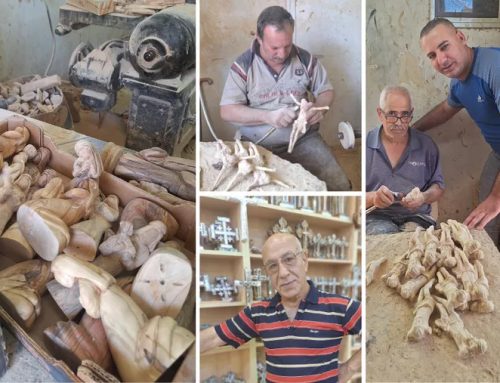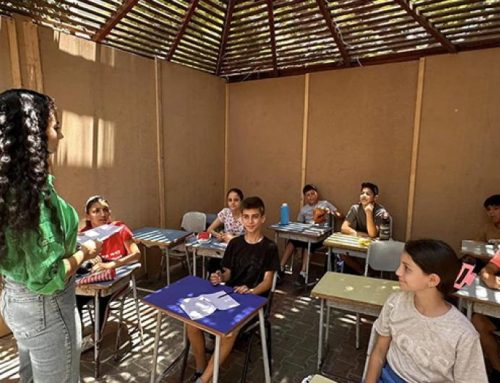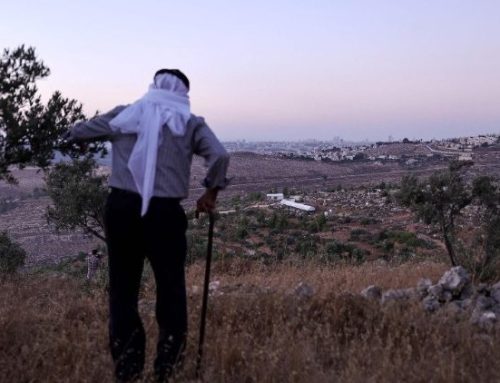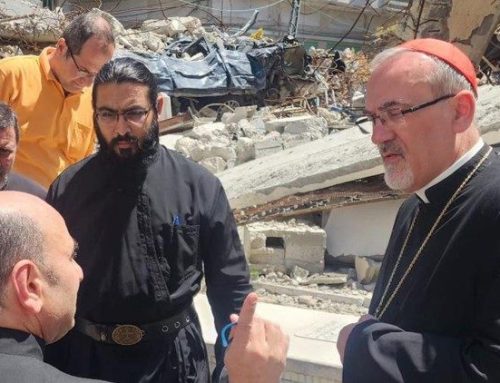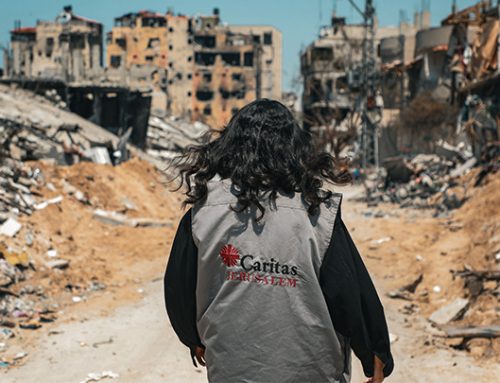The Christian roots in Taybeh are traced to our Lord and Savior Christ Himself as stated in the New Testament.
The Christian roots in Taybeh are traced to our Lord and Savior Christ Himself as stated in the New Testament. Jesus came to the village of Taybeh with his disciples after the decision was taken by the Sanhedrin to prosecute him. “Jesus therefore walked no more openly among the Jews; but went thence unto a country near the wilderness, into a city called Ephraim…” (John 11:54).
The village of Taybeh had the biblical name Ephraim. The biblical name was changed to the modern name Taybeh by the Islamic leader Salahdin around 1187. The folktale states that Salahdin visited the village Ephraim and found its people very hospitable and generous thus he made a statement that they are “Taybehn” people in Arabic meaning “good and kind,” thereby since that day Biblical Ephraim took the modern name “Taybeh.” However, there are three places called “Taybeh” in this region. One is “Taybeh Zaman” (original Taybeh) in Jordan, the other is “Taybeh”, north of Israel and close to Jenin.
Our village of Taybeh is the only all Christian village that remains in Palestine twenty minutes outside Jerusalem before Jericho with 1300 residents all of whom are Christian and the majority is Greek Orthodox. All residents are Palestinians with a handful of outsiders. Following the l967 Israeli invasion of the West Bank approximately ten thousand people from Taybeh have emigrated to Australia, America and Europe due to the politics, bad economic situation and daily suffering faced under military occupation. The village is located between Jerusalem and Jericho in the biblical land of Judea known as the West Bank of Jordan and unfortunately does not exist on any modern map.
The village does exist here however since the time of Christ and it sits on the highest mountain region of Biblica Judea and Samaria called Mount Asur. On a clear day from the highest hill in Taybeh you can see the magnificent Dead Sea, the Jordan valley, the mountains of Samaria, the mountainous desert of Judea and also Jerusalem. It is really amazing and spiritually rewarding to stare down at the same valley where St. Mary of Egypt is said to have spent over forty years of her life in solitude. The village has five places of worship including the original St. George Greek Orthodox Church in ruins (built in the 4th century), the new St. George Greek Orthodox Church (rebuild in l929-1932), the Melkite Church (build in l964 but Melkite worship was founded in the village in 1869), the Roman Catholic Church dedicated to “The Last Retreat of Jesus” (inaugurated l971) and a small monastery build by a French monk Brother Jack Frant in l990.
We are identified as area C and have technically remained under Israeli military occupation even throughout the Oslo Peace Agreement. The settlements are a big obstacle to peace because Palestinians suffer trying to get between ABC areas for work, school and hospitals. It is impossible to get anywhere when the Israelis control all the roads and they just gave the Palestinians the center of towns to control. Our area was never turned over to the Palestinian Authority because we have hundreds of illegal settlements all around us. The largest settlement in the West Bank “Ofra” is next to our village. Ofra is the Hebrew name for the village of Efraim.
The village also has one clinic sponsored by the CARITAS organization directed by Dr. Riayd Muaddi, one pharmacy and many mini-markets. Since l956 the village was one of the first in the area to receive water, electricity and phone lines. The majority of the residents are unskilled workers with a few professionals. Traditionally, the residents of Taybeh have earned their living from the land especially cultivating olive trees. The village was put on the map in modern times because the Canaan Khoury family established The Taybeh Brewing Company making “Taybeh Beer” following the Oslo Peace Agreement in l993. The brewery is the only factory in Taybeh and the only microbrewery in the Middle East.
Taybeh has good relationships with its neighboring Muslim villages. The village of Reimon is on one side and the village of Deir Ejrear on the other side. Taybeh village has no communication with the neighboring Israeli settlements that are constantly depriving the village of water and stealing more and more Palestinian land to build illegal Israeli settlements. The residents of Taybeh share the same language, food, music and cultural values with the neighboring Muslim villages thus an exchange of invitations for weddings can often be found. However, there is no intermarriage among Muslims and Christians and it is almost forbidden. The few times that such marriages might take place their families disown the married couple. Muslims and Christians are somehow united by their Palestinian identity and their fight for independence and freedom but are obviously very different in their ways of worship and how they celebrate their holy days.
The Taybeh village has always been under the protection of our patron Saint George ever since Constantine the great emperor built the first church to be named after St. George in the Holy Land right in our little village. We have been blessed not to have seen the destruction and bombings that have happened in nearby Ramallah and other parts of Palestine. For two thousand years this tiny little village has had the blessing to maintain a Christian presence in the Holy Land. When the village was placed under curfew for only one day in April most people waited with faith in God for the Israelis soldiers to approach. Does it sound strange to have seen so much bloodshed and terror that you can actually transcend beyond fear and anxiety and wait with faith in God? At the end, our final destiny is the Kingdom of God so we pray for God’s mercy as we live under Israeli guns. In the mean time we must walk with the Cross that God offered us and preserve our Christian roots in the land of Christ’s birth.

